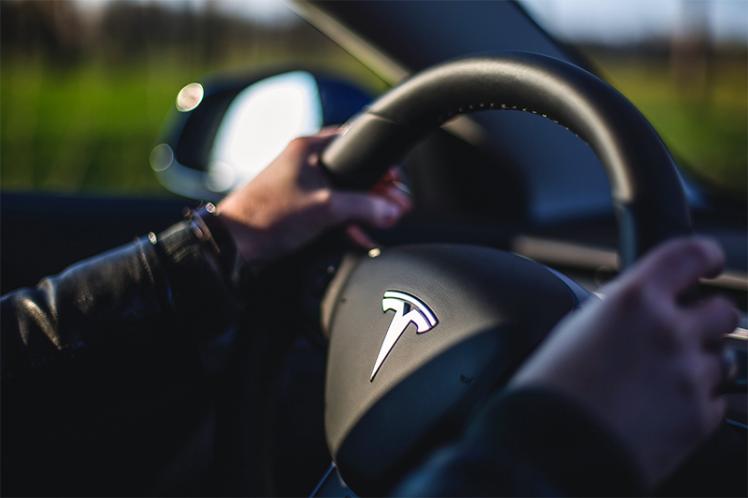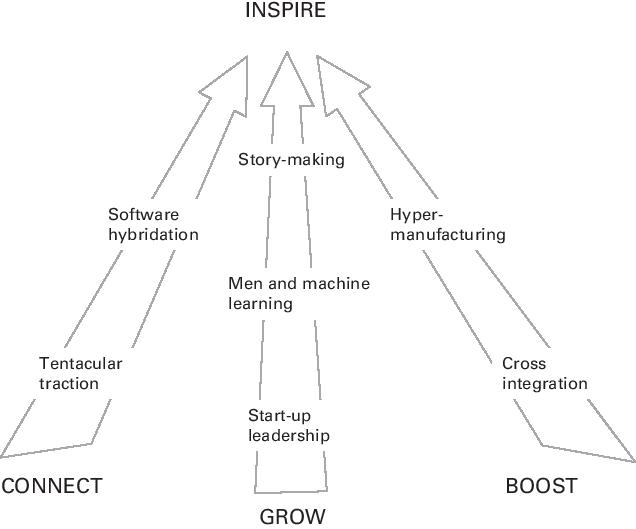Could You Be the next Elon Musk?

While some call Elon Musk a “mad scientist”, others see him as a “superhero”. Visionary? Illuminated? Elon Musk is intriguing, as are his innovative managerial methods.
His obsession? Sustainable energy. Highly imbued with respect for the environment, he announced on 31 August 2019 that the use of animal leather in his Tesla Model 3s was to be stopped. A rare consideration for the animal in this industry, showing us what a special leader Elon Musk really is.

Figure 2-4: TESLISM FOUR OBJECTS
“I would like to die thinking that humanity has a bright future. If we can solve sustainable energy and be well on our way to becoming a multi-planetary species with a self-sustaining civilization on another planet—to cope with a worst-case scenario happening and extinguishing human consciousness—then... I think that would be really good ” [1] said Elon Musk in 2015. His idea is to make life easier for his products’ users, all the while preserving the environment. Off with the consumer society and a warm welcome to responsible production and consumption.
This tireless innovator provides each of his companies with a “purpose”. A company's purpose is the deep meaning it gives to its activity, the way it defines its usefulness. This, therefore, implies a long-term vision, which is indeed a characteristic of Elon Musk. The man who already imagines housing on Mars when no one has ever set foot there before has a vision for Tesla to make life easier for consumers, without neglecting the issue of eco-responsibility. His latest idea? To launch your own car insurance, promising 20% to 30% savings to your customers. So Elon Musk seems to be one step ahead. The question then arises: how can you learn from his methods to facilitate your company's transition to the 4th industrial revolution?
Elon Musk's vision: the importance of commitment
Elon Musk is moving forward on several fronts, and commitment is a key factor in Tesla's dramatic development.

Figure 2-3: THE SEVEN PRINCIPLES OF TESLISM
Among the seven principles of teslism, four of them are related to commitment. We have devoted an article to hyper-manufacturing. The end of lean manufacturing and over-consumption was mentioned, but also the new managerial methods used, such as agility or collaborative value creation.
A second principle applied by Elon Musk is cross-integration, which involves a double need for responsiveness and respect for the environment, based on the integration and connections of the full range of corporate functions all the way through the final customer. Cooperation is therefore essential to the successful manufacture of a product.
Story-making is also practised by Elon Musk, which is linked to the purpose of the project. Its refers to the ability to energize people using an inspiring objective, both within a company but also in society and with customers and investors. In Tesla’s case, the company is driven by Elon Musk’s vision of promoting a 360-degree energy transition enabling humankind to survive both on earth and in space.
Finally, it is important to involve your teams, that they are committed to the product. Start-up leadership is, therefore, the idea that teams should be allowed to assume responsibility in a way that will encourage creativity, initiative and collective intelligence.
The commitment, therefore, takes several aspects: the commitment of the manager to his teams and the users of his products, the commitment of the teams within the company and, finally, the commitment of the consumer to adhere to the purpose of the company and, therefore, to consume his products.
But what about the other three principles?
Digital and industrial hybridisation: the essential step
The 4th industrial revolution was driven by the development of new technologies, particularly information technology. Elon Musk has designed his cars in such a way that they can become computers that drive. The introduction of hybrid software in the company makes it possible to design connected objects in order to make its use as simple as possible. It is therefore essential today to combine the skills of people with those of machines in order to increase productivity.
As IT evolves very rapidly, teams must follow this evolution closely so that they are never overtaken. The principle of human and machine learning is central for companies in order to always be at the top of competitiveness. The intelligence of an industrial system is always a collective adventure driven by people’s ability to develop, to capitalize quickly upon opportunities and to optimize machinery. The human and machine learning construct includes all these dimensions.
One of Tesla’s greatest strengths is its ability to learn from its mistakes and change direction quickly to avoid running into walls or any other unexpected obstacles.
The last principle of teslism is to approach markets with a tentacular, trans-sectorial vision and to operate in network mode in order to gain commercial traction. Tesla’s example shows that the best way to build platforms in the industrial world is to create one’s own network through a product. Companies must, therefore, learn to implement and take advantage of network effects through tentacular traction.
Conclusion
Tomorrow’s leaders will also be coaches assuming a greater number of roles (as cultivators, challengers, accelerators but also doers) than their predecessors did. While the leaders of the 3rd industrial revolution were focused on productivity and competitiveness only, the 4th industrial revolution forces leaders to consider more parameters, such as everyone’s hyper-connectivity with everyone else ; the exponential nature of progress; winner-take-all hyper-concentration ; and the use economy.
To become the next Elon Musk, acting like him isn’t all it takes. You have to adapt your methods to your business and ask yourself a number of questions before you start. Are decisions taken quickly enough at every level of the company? Have I sufficiently used digitization to generate data sharing and end-to-end collaboration between corporate functions (marketing, R&D, sales, supply chain, production, after-sales)? As a leader, have I promoted a mindset rooted in transparency, openness and mutual aid to ensure that data sharing generates collaborative value?
Business leaders – if you want answers to these questions, don’t hesitate to get help from experts!
[1] VANCE, A. (2015), Elon Musk : Tesla, SpaceX, and the Quest for a Fantastic Future, Ecco, NYC




